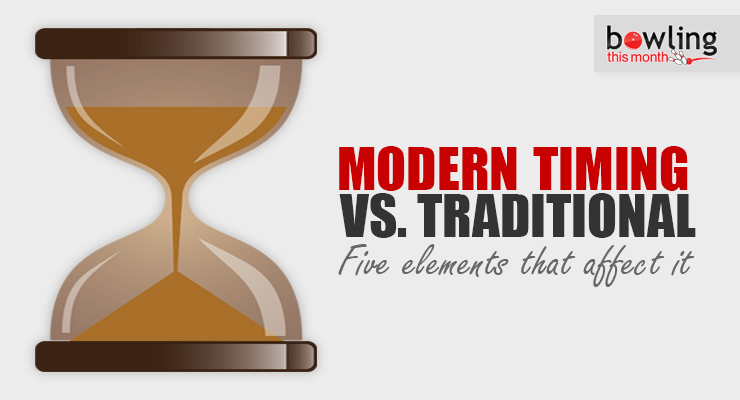Timing is the single most important aspect of the physical side of the game of bowling. It is also the most over-simplified and the most misunderstood. If you are a regular reader of BTM, you have read many, many articles about the changes that have occurred in the modern version of the game. Perhaps the biggest change concerns the definition of “perfect” timing. We all pretty much agree that the modern definition of perfect timing is quite a bit later than the traditional definition. The challenge for bowlers who want to develop more power and leverage through later timing is how to achieve it without losing the fluidity of the armswing.
Many bowlers believe that timing results totally from when the ball is pushed away from the body as the bowler begins his/her approach. Traditionally, we push the ball away with the second step of a five-step approach to let the ball swing freely and arrive next to the sliding ankle in perfect position to release the ball. This logic may lead you to believe that all you have to do to achieve later, more leveraged timing for a more powerful release is to push the ball away later in the approach. The logical move then is to push the ball away with the third step rather than the second to achieve later timing. Right? Wrong. If a bowler pushes the ball away with the third step rather than the second, he has made his timing 20 percent later, and that is just too much.
There are five elements of the physical game that affect our timing:
- When the ball is pushed away
- The length of the pushaway
- The length of the backswing
- The length of the individual steps
- The rhythm or cadence of the individual steps
All of these elements combine to get the bowler to the line in the correct position to deliver the ...
This article is only available to Bowling This Month subscribers. Click below to get instant access to this article and all of our other premium instructional content.
Subscribe to Bowling This Month
Already a Bowling This Month subscriber? Click here to log in.
